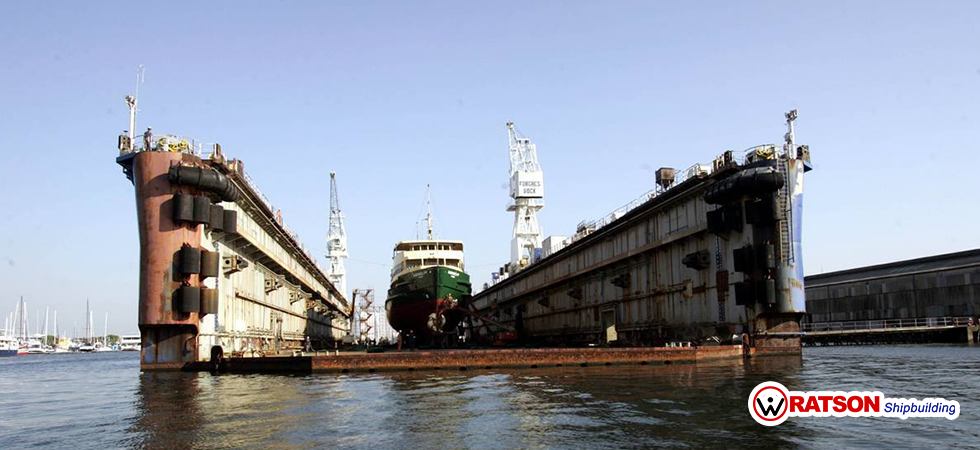
Every shipyard and shipowner should be familiar with the terms dockyard. The dockyard is a facility or area which is equipped to do a vessel repairing and maintenance. The difference between shipyard and dockyard is simply dockyard is for repairing and maintenance purpose, while shipyard is for building a new vessel even though both shipyard and dockyard can do new building projects and repairing projects.
The dockyard that we want to discuss here is a dry dock. There are several types of dry dock out there which are a graving dock, floating dock, marine rail dock, ship lift, and marine mobile lift. All of those dockyards can bring the vessel from the water into a dry area for the repair and maintenance project. Every dockyard types have its own strengths and weaknesses. In the case of ship lift and marine mobile lifts are usually used for a small the vessel only such as recreational yachts, tug pilot boats, etc because it has small capacity.
This article will help us to understand further about one of the types of dockyard, which is a floating dock. At first, a floating dock is used to carry a vessel or a ship that met an accident to the extent that the vessel cannot sail to the coastal dock by itself. Having this purpose, a floating dock is made with a “U” shaped bottom structure so that it can have a high buoyancy level. However, nowadays, a floating dock also equipped with the facility to do a repair and maintenance project because many of the small and mid-sized vessels having their docking at a floating dock.
How does a floating dock works? A floating dock is having a ballast that can be filled so that the floating dock can submerge itself to let the ship slides inside the dock. Once the ship is in position, the floating dock can be de-ballasted slowly to set the vessel with the block arranged on the floor of the floating dock. Once the vessel is set on the block, then all the water inside the ballast can be pumped out so that the floating dock can bring the vessel up and having an underwater work going. In order to do this, a floating dock is equipped with a valve that can be open so that the ballast can be filled and also a pump, to pumped out the water from the ballast.
Floating has its own strength and weaknesses that can be described as below:
Strength:
1. The Floating dock can be moved and propelled to anywhere you want as long as the draft level is suitable.
2. There is more than one ballast that can be used to submerge or float the floating dock, different with a dock gate at the graving docks which if it is broken, the graving dock cannot be used until it is fixed.
3. The Floating dock doesn’t need a space of the shore facility because it can be installed away from the shore.
4. The Floating dock can be altered and increase in size by doing extensive retrofitting/ rebuilding.
Weaknesses:
1. The Floating dock the same with regular vessels operating in the sea, therefore it needs to be docked periodically.
2. Supply access for material, equipment, etc. It is usually done with a single access gangway which can slow down the operation process.
3. Dependent on the weather, because a floating dock will be affected if there are tides and windy weather.
The floating dock is worth of investment when you have a lot of docking and repair clients. Furthermore, you don’t need to have a big piece of land to do this investment because you can operate a floating dock away from the shore. In order to invest in a floating dock with its full facilities such as crane and heavy lifting equipment, you will need to invest as much as 100 billion rupiahs. Else, you always have an option to purchase a used floating dock and have your dockyard business running.
Dredgers are important machines used for excavation and land reclamation in water bodies. They come in different shapes, sizes, and types, depending on the specific purpose they are designed for. I....
Pilot boats play a vital role in ensuring the safety and efficiency of maritime transportation. These boats are designed to transport pilots to and from ships that require their expertise in navig....
Self-propelled barges are vessels that are designed to transport large quantities of cargo on inland waterways. These barges are propelled by their own engines, making them highly efficient and cos....
Barge/ Dumb Barge A barge is a flat-bottomed boat that is designed to transport goods or people on inland waterways or near-shore locations. Dumb barges, also known as unpowered barges, are t....